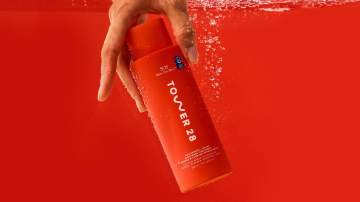The story was originally published on Glossy’s sibling publication Digiday.
Brands are increasingly feeling the impact of President Trump’s tariffs — particularly those sourcing from China, where U.S. tariffs have climbed to 145%, with more changes on the horizon.
One such brand is Bogg Bag, the brightly colored, Croc-inspired tote bag that was riding a wave of virality last year. Kimberly Vaccarella, CEO and founder of Bogg Bag, is no stranger to economic headwinds, having launched her business amidst the 2008 financial crisis, managed tariffs during the first Trump administration and navigated a supply chain crisis during the Covid-19 pandemic.
Trump’s current tariffs, however, are new. The start and stop nature of the tariffs has made for uncertainty, leaving brands like Bogg Bag, well, uncertain of how to best brace for impact. In response, Vaccarella is considering expanding Bogg Bag’s supply chain out of China to set up a factory in Vietnam.
“This is just something I don’t think, certainly I haven’t seen, and I’m sure a lot of business owners will never see in their lifetime, hopefully,” Vaccarella said, later adding, “It’s a guessing game every day.”
Certainly, Vaccarella is not alone. Creators are overhauling their side businesses, marketers are uncertain and on-edge and retail media buyers are asking for more flexibility in their spend commitments. Digiday caught up with Vaccarella to talk about how Bogg Bag is navigating the tariffs, economic uncertainty and a new, different kind of supply chain crisis.
This interview has been lightly edited for clarity.
What’s happening with all the tariffs right now? How is it impacting Bogg’s production facilities?
“We have 14 containers landing this week. We have 45 on the water. We have 100 ready to leave in China. So now what do we do? We’re in this holding pattern, what do we really need? What’s going to drive the needle for us? Is this just a replenishment of stock? Can we hold off on it or is this something that may potentially damage our relationship with one of our larger retailers? There’s so many moving parts there that it’s hard.
We did have a couple of [retailers] cancel — not just our orders, but they did an overall cancellation of all pending shipments coming in. So now we’re stuck with those orders. But how do we even bring them in at this current rate, at this 150+%? You’d end up losing money at a certain point. Because it’s not only the tariff, it’s rerouting a shipment, changing that over, paying the demurrage, because then all of the logistic costs are gonna get very, very high too.”
What are the ripple effects here? Last we talked, Bogg was just starting marketing and a partnership with Target.
“It’s going to affect all parts of the business. Let’s start with the marketing. We have a team out doing a photoshoot right now, and my mind is going, “Oh my gosh, do we really need to be spending this money right now? There may be nobody to look at the pictures in a couple of months.” As much as you look at it, however often you look at it, there are always ways to save. How can we renegotiate fees or subscriptions or whatever the case is? Let’s go back and look at everything. How can we shave off? How can we do this so that we don’t have to lay off people, that we don’t have to have these massive price increases? We’re not going to pass that on to the consumer, so we need to be creative and find other ways that we can salvage this in a healthy way.”
As you’re talking to other small business owners, what are those conversations like?
“They’re all just saying the same thing. Some people are trying different things that may work. It’s a lot, and with ever-changing news, the biggest thing I’ve been expressing to my fellow business owners is stay calm, don’t make knee-jerk reactions. Because this could all go away next week, or it could last for nine months or 90 days or whatever.”
Have you considered U.S. production?
“We have looked and had some good conversations. Again, not with the scale. The scale would be such a tiny percentage [of production] that they could handle here.”
In addition to the tariffs, there’s the TikTok ban. Does that upend part of the marketing strategy as well?
“From a business perspective, we weren’t spending the money on TikTok. A lot of our viral posts were organic. They were coming from other people that we weren’t paying as influencers. We had the perfect combination there. We just started doing some work with TikTok and, spending a little bit of money there, but also offering our product on there. We were running between 1% and 3% of our sales overall from TikTok. Over the last couple of weeks, it popped up to 10%. Now, it’s become an issue again. It’s like, “OK, there’s another thing that could go by the wayside.” All of a sudden 10% of our sales overall are coming from TikTok, so that’s a little scary, too.”
All of this uncertainty means it’s hard to account for marketing budgets and media spend. How is that shaping up for you guys?
“I built Bogg Bag organically on social and I have no problem doing that again. I know that it’s such a big thing to do sponsored ads and all this other stuff, and Facebook. We spend a ton of money on Facebook and Instagram, and sometimes, I’m like, “Do we need to do that?” It’s re-evaluating all of those expenses. These are all the things that we have to think about going forward, because we may need not even get the products that are part of these marketing shoots, and then it’s dead.”




